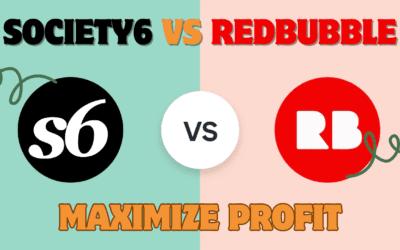Introduction
The JavaScript runtime landscape, long dominated by Node.js, is experiencing a seismic shift. A new generation of runtimes is emerging, promising faster execution, streamlined tooling, and modern developer experiences. Leading this charge is Bun, an all-in-one toolkit that claims to be a drop-in replacement for Node.js. This guide is your launchpad for Getting Started with Bun. We’ll explore what it is, unpack its blistering performance claims with real data, and provide a clear-eyed analysis to answer the critical question: is Bun a true Node.js killer, or simply a powerful new alternative?
What is Bun?
Bun is not just another JavaScript runtime; it’s a ambitious project that aims to be a complete toolkit for JavaScript and TypeScript development. Positioned as a faster, more modern alternative to Node.js, it seeks to eliminate the tooling complexity that often plagues JavaScript projects.
At its core, Bun is a JavaScript runtime built from the ground up in Zig, a systems programming language prized for its performance and low-level control. A key architectural difference is its engine: while Node.js and Deno use Google’s V8 engine, Bun is built on JavaScriptCore (JSC), the engine that powers Safari. This foundation is a major contributor to Bun’s famously fast startup times .
Bun’s primary goal is to serve as an all-in-one solution. Instead of piecing together separate tools for package management, bundling, and testing, Bun bakes these capabilities directly into a single binary . This means you can replace node, npm, webpack, jest, and ts-node with one tool: bun.
| Feature | Node.js | Bun |
|---|---|---|
| Engine | Google’s V8 | JavaScriptCore (JSC) |
| Package Manager | npm (separate) | Built-in (bun install) |
| TypeScript Support | Requires ts-node or similar | Native, zero-config |
| Test Runner | Jest/Mocha (separate) | Built-in (bun test) |
| Bundler | Webpack/Rollup (separate) | Built-in (bun build) |
Key Features When Getting Started with Bun
When you begin Getting Started with Bun, you immediately encounter its “batteries-included” philosophy. It’s designed to get you from zero to coding with minimal configuration and maximum speed.
All-in-One Toolkit
Bun consolidates your entire JavaScript toolchain, which dramatically simplifies project setup and maintenance .
- Runtime: Execute
.js,.ts,.jsx, and.tsxfiles directly. - Package Manager:
bun installis designed to be a dramatically faster drop-in replacement fornpm,yarn, orpnpm. It can install packages in parallel, with some reports indicating it’s up to 25x faster than npm . - Bundler: Use
bun buildto bundle your applications for both frontend and backend, with built-in minification and tree-shaking. - Test Runner: A
bun testcommand provides a Jest-compatible test runner, so you can often run your existing test suites without changes.
Performance and Benchmarks
Performance is Bun’s flagship feature, and the benchmarks are compelling. The combination of the JavaScriptCore engine and Zig’s low-level optimizations leads to significant performance gains in several key areas.
- HTTP Throughput: In a simple HTTP server benchmark, Bun sustained approximately ~70,000 requests per second, compared to Node.js at ~25,000 requests per second on the same hardware . Another analysis showed Bun delivering 4x the HTTP throughput of Node.js .
- Startup Time: For short-lived processes like serverless functions or CLI tools, startup time is critical. Bun excels here, with one analysis showing startup in about 31ms, compared to 127ms for Node.js and 98ms for Deno .
- CPU-Heavy Tasks: In tests involving CPU-intensive work, such as sorting large datasets, Bun completed tasks in about 1,700 ms, half the 3,400 ms it took Node.js .
Tooling and Compatibility
A major hurdle for any new runtime is ecosystem compatibility. Bun’s approach is pragmatic: it aims to be a drop-in replacement for Node.js.
- Node.js API Compatibility: Bun has built-in support for many Node.js globals (
process,Buffer) and modules (fs,path,http) . This means many existing npm packages and Node.js scripts will work in Bun with no modifications. - Native TypeScript and JSX: Perhaps one of the most loved features is native TypeScript support. You can run a
.tsfile directly withbun index.tswithout any configuration or separate transpilation step . This eliminates the need for tools likets-node. - Built-in Web APIs: Bun supports standard Web APIs like
fetch,Request,Response, andWebSocket, making it easy to write isomorphic code that runs in both the browser and on the server .
Here’s a quick example of a simple server in Bun, showcasing its modern API:
javascript// Simple HTTP server with Bun const server = Bun.serve({ port: 3000, fetch(req) { return new Response(“Hello from Bun!”); }, }); console.log(`Listening on http://localhost:${server.port} …`);
Is Bun a True Node.js Killer?
This is the multi-million dollar question. After examining its features and performance, the answer for 2025 is nuanced: Bun is a formidable challenger, but not yet a full Node.js killer.
Bun’s Formidable Strengths
Bun is an excellent choice in these scenarios:
- Greenfield Projects: Starting a new API, full-stack app, or tool? Bun’s streamlined tooling gets you up and running faster .
- Performance-Critical Applications: If you’re building CLI tools, serverless functions, or anything where cold start time and execution speed are paramount, Bun’s performance is a significant advantage .
- Developer Experience (DX): For developers frustrated with the configuration fatigue of modern JavaScript, Bun offers a refreshing, integrated experience. It’s also perfect for scripts and simple servers where its built-in APIs reduce boilerplate.
Node.js’s Enduring Advantages
Node.js remains the safe and powerful choice for several reasons:
- Ecosystem Maturity: Node.js has a decade-long head start. The npm registry contains over a million packages, and virtually every library, tutorial, and production pattern is built for it. While Bun’s compatibility is impressive, some native Node.js modules and less-maintained packages may not work perfectly .
- Battle-Tested Stability: Node.js powers production systems at companies like Netflix, PayPal, and LinkedIn. Its Long-Term Support (LTS) schedule and massive community provide a level of enterprise certainty that a newer project like Bun is still building .
- Extensive Tooling Customization: Node’s modular philosophy allows for highly customized build pipelines. If your project relies on specific Webpack loaders, Babel transforms, or other enterprise tools, Node’s ecosystem depth is still unmatched .
Actionable Insight: The choice often boils down to velocity vs. stability. Choose Bun for its speed and simplicity in new, performance-sensitive projects. Choose Node.js for large, existing codebases, enterprise requirements, or when you need absolute confidence in package compatibility .
How to Get Started with Bun Today
Ready to try it out? Getting Started with Bun on your local machine is a straightforward process.
Step 1: Installation
Run the official install script in your terminal. This works for macOS, Linux, and Windows Subsystem for Linux (WSL).
bashcurl -fsSL https://bun.sh/install | bash
Alternatively, you can install it via package managers like Homebrew (brew install bun) or by using Docker with the oven/bun image .
Step 2: Create Your First Project
Scaffold a new project using Bun’s interactive init command.
bashbun init
This will create a package.json file and an entry point (e.g., index.ts). You can now run your script instantly with:
bashbun run index.ts
Step 3: Migrate a Simple Node.js Script
A great way to test Bun’s compatibility is to try running an existing Node.js script. For example, if you have a script that uses fs and path, you can often simply run it with bun run your-script.js and it will work.
You can also use Bun as your package manager in an existing Node.js project. Navigate to the project and run:
bashbun install
This will use Bun’s ultra-fast installer to fetch your dependencies, creating a bun.lockb lockfile. You can then run your scripts and tests with bun run and bun test to feel the performance difference.
Best Practices for Adoption
- Start Small: Don’t try to migrate a massive, business-critical Node.js application immediately. Begin with a new project or a non-critical script.
- Validate Compatibility: Run your test suite with
bun testand check for any errors related to native modules or specific Node.js APIs. - Leverage the Built-in Tools: Embrace the built-in test runner and bundler to reduce your project’s dependency count and configuration files.
Conclusion
So, is Bun a true Node.js killer? In its current state, no. Node.js’s vast ecosystem and proven track record ensure it will remain a dominant force for years to come. However, Bun is undeniably a revolutionary step forward. Its incredible performance, all-in-one design, and focus on developer experience address real pain points in the Node.js workflow.
Bun is less of a killer and more of an evolution. It pushes the entire JavaScript ecosystem toward a faster, simpler, and more integrated future. For developers building new applications, especially those where performance is a priority, Bun is no longer just an experimental technology—it’s a compelling and production-viable choice.
The best way to answer the question for yourself is to try it. Spend an afternoon Getting Started with Bun on a small project. Feel the speed of bun install, experience the simplicity of running TypeScript natively, and see for yourself if this new runtime is the right tool for your next big idea.
Sources and References
- [1] Deno Vs Bun In 2025: Two Modern Approaches To … – Provides analysis of collaboration models, technical philosophy, and ecosystem positioning for Bun and Deno.
- [2] Bun vs Node.js 2025: Performance, Speed & Developer … – Offers a detailed, practical performance comparison with benchmark data on HTTP throughput, task completion times, and tooling.
- [3] Bun 1.3 | Bun Blog – The official Bun release blog, detailing features like the built-in SQL client, frontend tooling, and API updates.
- [4] ️ Node.js vs Bun vs Deno: Who Rules the Server in 2025? – Presents benchmark snapshots and a concise comparison table covering speed, security, and module support.
- [5] Getting Started With Bun – A beginner-friendly guide covering installation, running a simple server, and using Bun as a package manager.
- [7] Getting Started with Bun.js: A Quick Guide – Provides performance metrics like startup time comparisons and explains Bun’s configuration via
bunfig.toml.


















